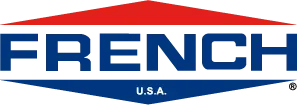If your company is in the business of bonding or molding rubber and composite materials or laminates, you may be debating whether a new or used hydraulic press yield the most bottom line profit.
While the immediate savings on the purchase price of a used press may be enticing, there are risks you should first consider before investing your capital in used machinery.
To that end, here are four potential drawbacks of a used hydraulic press machine that may hinder your quality-driven operations.
#1 Unscrupulous Sellers
Unfortunately, hydraulic press machines made with less-than-optimal construction are susceptible to breakdown over time. The frequency and severity of disrepair depend largely on whether the heavy-duty machinery was properly used and cared for.
When you buy a new hydraulic press, you receive an unblemished machine capable of operating at peak capacity. And if there are initial defects, the manufacturer’s warranty will cover those costs.
The same cannot be said for a used hydraulic press.
If the previous owner neglected to perform preventative maintenance, the press could be susceptible to issues like:
- Shorter life cycle
- More costly repairs
- Longer downtime
- Overheating
- Hydraulic drift
- Loss of pressure
- Slow pressure build-up
A seller could feasibly patch a flawed machine to mask existing problems or even major structural defects, only for them to reappear a few months down the line. By the time you uncover an issue like leaking or overheating, your manufacturing processes may already be significantly disrupted, and the quality of your products negatively impacted. Manuals and support documentation may not be provided by the seller, making operation learning difficult. Additional documentation for modifications made to the original design also may not be available and that can cause issues when it comes to replacement parts, especially if the original press manufacturer is no longer in business to support your troubleshooting.
#2 Longevity
In this cost equation, you cannot overlook the significance of depreciation.
Whether you buy from a reputable machinery company or a third-party seller, the machine you purchase will likely have accrued natural wear and tear during its previous operations. To maintain long-term output and reduce machinery turnover it is essential to operate with top-of-the-line technology, which a used hydraulic press machine may not be able to deliver.
Additionally, you will have to plan for the fact that a used press will very likely require more maintenance and repairs than new machinery, which can increase operating costs and slow production over time. Based on the age of the machine, it is possible that new parts are not readily available or if they are, it would require a special order with extremely long lead-times (if available at all).
For example, hydraulic press could begin to overheat within three hours of every workday. To ensure the press continues to dissipate heat at a faster rate than it is generated, you’ll need to offset the heat load by replacing its worn parts and hydraulic fluid regularly. This can take a toll on your profit and your output.
#3 Optionality
When you opt for a used press, your options are limited to what is available at the time—you may need a four-column press for your large-scale operations, but only find side plate designs locally or online.
The search for a used press is not as easy as finding a used car. It is an intensive process that requires diligence as you scour the market, inspect the machines, and compare limited options.
In comparison, buying a new hydraulic press gives you greater flexibility in terms of:
- Construction
- Platen size
- Heating/cooling options
- Programming capabilities
A new machine will often operate with state-of-the-art molding applications for various molding processes, such as:
- Cast molding
- Compaction Molding
- Compression Press Molding
- Injection Molding Reaction Injection Molding (RIM)
- Structural Reinforced RIM (SRIM)
- Transfer Molding
#4 Hydraulic Press Configuration
What is your intended use for the machine? A seller may act as though the hydraulic press is optimally configured to serve your desired application, but that is not necessarily true. The vast majority of hydraulic press equipment isn’t universal. Rather, it is configured for a specific workflow.
You will want to ensure that the machine matches its application requirements, whether that be laminates, composite components, or rubber. The three most critical capabilities to consider include:
- Return on position – This type of press cycle involves the press ram lowering and closing the die to a set depth that molds the material. The ram then returns up to its initial position.
- Return on pressure – This capability allows the ram to lower to an adjustable pressure setting, then retract once it’s reached.
- Return on pressure with dwell – With a dwell capability, a ram can achieve a target force or pressure for a long period of time.
When you buy new, particularly from a premier manufacturer like French, you can ensure that the press is engineered to meet your specific needs.
French Oil Mill Machinery Company: Customized Hydraulic Press Designs That Excel
Purchasing a hydraulic press is an investment decision that cannot be made lightly, especially if you’re considering a used machine. You must consider your long-term needs and specific procedural requirements when implementing new machinery into your operations.
That’s one thing the French Oil Mill Machinery Company does skillfully.
When you partner with our team of world-class engineering experts, we’ll work with you to customize, design, and manufacture top-of-the-line hydraulic press systems that are geared to your exact specifications.
With French Oil Mill Machinery Co., it will run like clockwork. Contact us to start today!
